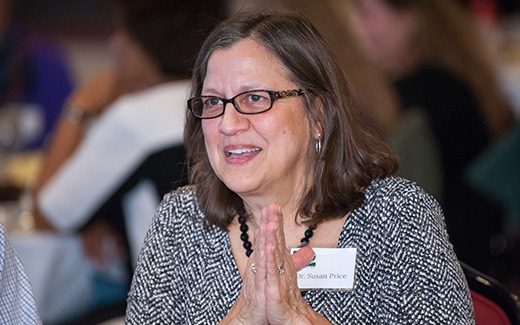Local Respiratory Therapy Programs Report 100% Employment Rate for Recent Graduates

Photo:Respiratory students learn from Nancy Colletti, respiratory care program director.
The national employment rate for new respiratory therapists is an impressively high 84.6%. Closer to home, it’s even better: 100% of those who complete the respiratory care programs at Kettering College or Sinclair Community College are employed in the field within two months of graduation.
“The demand for respiratory therapists has never been higher, with the number of positions expected to grow by 19 percent between 2012 and 2022—faster than average among all occupations,” says Nancy Colletti, director of the respiratory care program at Kettering College. “This anticipated growth is largely due to the fact that our population is aging, and older people are most likely to have breathing problems that require respiratory care.”
Respiratory therapists take care of patients with asthma, chronic bronchitis, emphysema, cystic fibrosis, and sleep apnea, as well as premature infants with undeveloped lungs and patients suffering from heart attacks, drowning, or shock. The occupation is a good fit for those who want to help others, enjoy working with technology, have an aptitude for math and science, like variety, and want a career that offers multiple opportunities for advancement.
Proof of ‘credentialing success’ “Dayton is very fortunate to have two of the top three respiratory care programs in the state of Ohio, based on employment rates and student success in passing national credentialing and licensing exams,” says Beth Zickefoose, director of the respiratory care program at Sinclair. Ohio State University joins Kettering College and Sinclair in the top three spots, Zickefoose adds. All three schools have earned the “Distinguished Registered Respiratory Therapist Award for Credentialing Success” from the Commission on Accreditation for Respiratory Care.
People who are interested in pursuing this career path need to hold an associate degree in respiratory care (available in two years from Sinclair) or a bachelor’s of science degree in respiratory care (available in three years from Kettering College). Kettering College also offers a bachelor’s of science completion program for respiratory therapists with an associate degree.
Prior to working in the field, students must pass a multiple-choice credentialing exam; 100% of Kettering College and Sinclair students do so on the first try, compared to the national first-time pass rate of 79.7%. In order to become a registered respiratory therapist, individuals then must pass a “clinical simulation exam.” The national first-time pass rate for that is 69%, compared to 100% and 92% for Kettering College and Sinclair, respectively.
Opportunities for advancement Most new respiratory therapists work in hospitals, although positions also are available in physician offices, sleep laboratories, freestanding emergency departments, and other settings. According to the Bureau of Labor Statistics, the mean hourly wage for respiratory therapists in Ohio is $25.52, which adjusts to a mean annual wage of $53,090. Median starting salaries in Ohio are lower, at about $46,580 a year.
Beavercreek resident Patrick Sellers, 34, graduated from the Kettering College program in July and began working as a respiratory therapist for two Kettering Health Network hospitals in early October. “When I was looking for a career change a few years ago, I originally was considering nursing—but all the local nursing programs were full,” says the married father of two. “The more I heard about respiratory care, the more it appealed to me. By the time I graduated, I had really fallen in love with the profession. Eventually, I’d like to go back and get more training so that I can specialize—maybe in neonatal, rehabilitation, or critical care.”
Eaton resident Katie Betscher decided to become a respiratory therapist after watching her mother struggle with respiratory issues before she died in 2011. Betscher, a single mom, enrolled at Sinclair in 2013 and received two job offers after graduating in May 2015. She now works as a respiratory therapist at Good Samaritan Hospital in Dayton. “I love my chosen career!” says Betscher, 40. “It’s an honor to care for patients and be part of their lives. I’m planning to return to school for a bachelor’s degree so I can keep advancing.”
A desire to continue learning is typical among respiratory therapists, Colletti says. “Most people in our field hold associate degree, but the number of respiratory therapists with a bachelor’s degree is increasing,” she explains. “Some return to school to earn a master’s or even a doctorate degree in business management, health care management, or another related field.”
Both Kettering College and Sinclair admit up to 24 students a year to their respiratory care programs. On November 17, Kettering College is hosting an open house from 6 to 7:30 p.m. for those interested in learning more about the school’s three-year bachelor’s degree in respiratory care. For details, visit kc.lionandpanda.com/kaps
Respiratory care at a glance:





